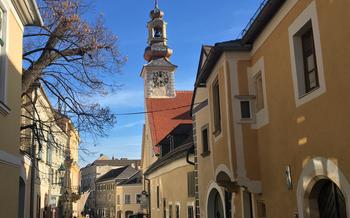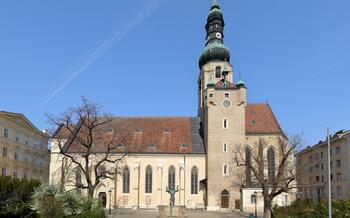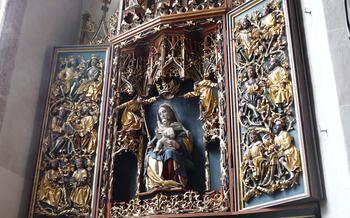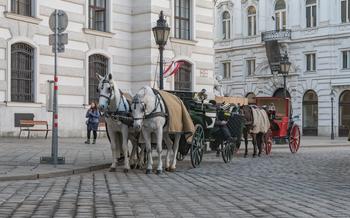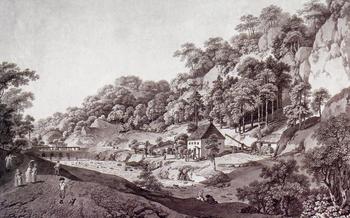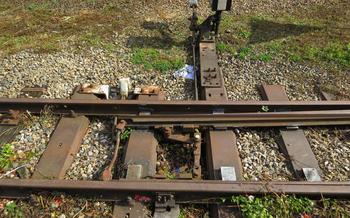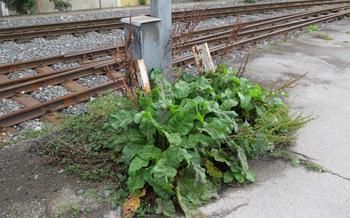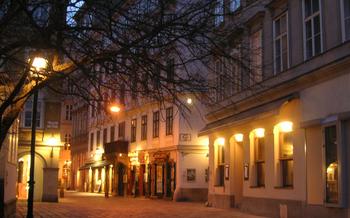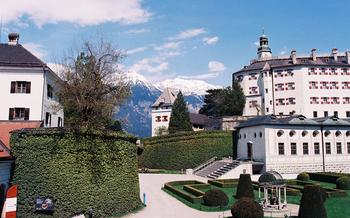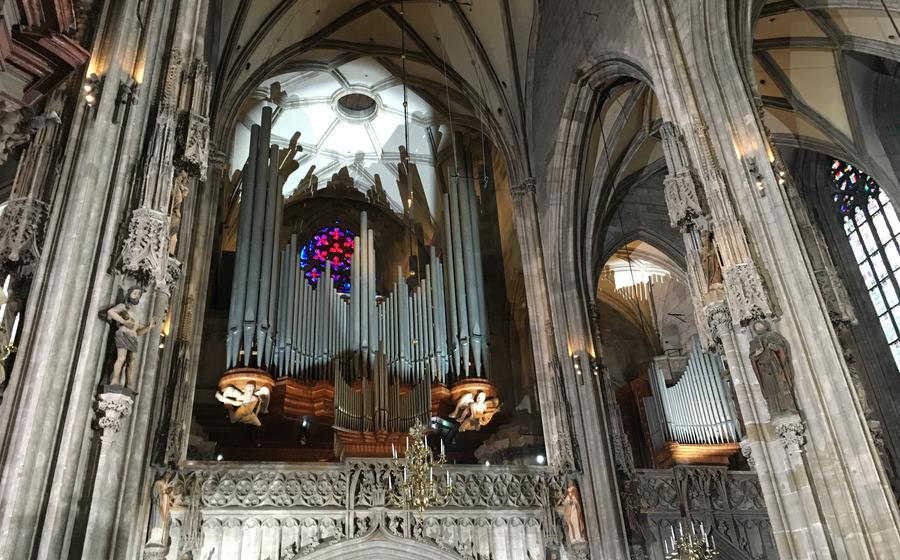
St. Stephen's Cathedral
- St. Stephen's Cathedral: A Timeless Masterpiece
- Exploring the Catacombs: Secrets Beneath the Cathedral
- Marveling at the Pummerin Bell: A Symbol of Resilience
- Discovering the Catacomb Museum: Unraveling the Past
- Learning about the Cathedral's History: A Journey Through Time
- Witnessing the Changing of the Guard: A Solemn Tradition
- Attending a Mass or Service: A Spiritual Experience
- Taking a Guided Tour: Unveiling Hidden Treasures
- Exploring the Cathedral's Surroundings: A Historic Neighborhood
- Shopping for Souvenirs: A Memento of Your Visit
- Capturing the Perfect Photo: Instagram-Worthy Moments
- Finding a Quiet Corner for Reflection: A Sacred Space
- Insider Tip: The Best Time to Visit
St. Stephen's Cathedral: A Timeless Masterpiece
History and Significance
In the heart of Vienna, Austria, stands St. Stephen's Cathedral, a towering testament to faith and architectural brilliance. Its origins date back to the 12th century, when a Romanesque church stood on the site. Over the centuries, the cathedral underwent numerous expansions and renovations, culminating in the Gothic masterpiece we see today. St. Stephen's Cathedral has played a pivotal role in Austrian history, serving as a place of worship, imperial coronations, and significant religious ceremonies.
Architectural Highlights
St. Stephen's Cathedral is renowned for its stunning Gothic architecture. Its exterior is adorned with intricate carvings, gargoyles, and flying buttresses, while the colorful roof tiles, laid in a geometric pattern, create a mesmerizing visual effect. The cathedral's two spires, reaching towards the sky, dominate the Vienna skyline and have become iconic symbols of the city.
Interior Details
The interior of St. Stephen's Cathedral is equally impressive, showcasing a wealth of artistic treasures. Stained-glass windows, crafted by master glassworkers, bathe the interior in a kaleidoscope of colors. The intricate altarpieces, sculptures, and frescoes depict biblical scenes and the lives of saints, offering a glimpse into the rich history of Christianity. The cathedral's massive organ, with its 10,000 pipes, adds to the awe-inspiring atmosphere, filling the space with majestic sounds during religious services and concerts.
Practical Information
St. Stephen's Cathedral is open to visitors daily, with varying hours depending on the season. Admission tickets are required, offering access to the main cathedral, the Catacombs, and the South Tower. Guided tours are available for a more in-depth exploration of the cathedral's history and architecture. The cathedral is wheelchair accessible, and audio guides are available in multiple languages.
Exploring the Catacombs: Secrets Beneath the Cathedral
Beneath the grandeur of St. Stephen's Cathedral lies a haunting and captivating realm – the catacombs. These underground chambers, steeped in history and mystery, offer a glimpse into the lives and deaths of those who once walked the streets of Vienna.
The history of the catacombs is intricately intertwined with that of the cathedral itself. In the 14th century, as the cathedral's construction progressed, a vast network of underground chambers was excavated to serve as a burial ground for the city's elite. Over the centuries, thousands of bodies were interred here, their remains carefully arranged in niches along the walls.
Today, the catacombs stand as a macabre reminder of Vienna's rich and often turbulent past. Visitors can wander through these eerie tunnels, surrounded by the bones of generations past. The air is thick with the scent of decay and the walls are adorned with intricate carvings and inscriptions, each telling a unique story of life and death.
For those seeking a truly immersive experience, guided tours are available, offering a deeper dive into the history and significance of the catacombs. These tours provide insights into the burial practices and beliefs of the past, as well as the challenges faced by those who lived in medieval Vienna.
To ensure a safe and respectful visit, it is essential to follow the safety precautions provided by the cathedral authorities. Visitors are advised to wear sturdy shoes and comfortable clothing, as the catacombs can be damp and uneven. Flash photography is not permitted, as it can damage the delicate bones and artifacts.
Whether you are drawn to the macabre or simply fascinated by history, the catacombs of St. Stephen's Cathedral offer a unique and unforgettable experience. Prepare to be transported back in time as you explore these subterranean chambers, where the echoes of the past still linger in the air.
Marveling at the Pummerin Bell: A Symbol of Resilience
The Pummerin Bell, housed within St. Stephen's Cathedral, is a symbol of resilience and a testament to the indomitable spirit of the Austrian people. Cast in 1711, this colossal bell weighs an astonishing 21 tons, making it one of the largest bells in Europe. Its deep, resonant toll has echoed through the centuries, marking significant events, times of joy and sorrow, and moments of national pride.
During World War II, the Pummerin Bell suffered a tragic fate. In 1945, as Allied forces approached Vienna, the Nazis decided to melt down the bell for weapons production. However, the bell fell from the crane during the removal process and shattered into pieces. The fragments were buried in the cathedral's catacombs to prevent their use for military purposes.
After the war, the Austrian people were determined to restore the Pummerin Bell to its former glory. In 1951, a new bell was cast using the metal from the original fragments, along with donations from across the country. The new Pummerin Bell, weighing 20 tons, was hoisted into the cathedral tower in 1957, where it has been ringing ever since.
The Pummerin Bell holds a special place in the hearts of Austrians. Its sound symbolizes hope, renewal, and the enduring strength of the nation. Visitors to St. Stephen's Cathedral can marvel at the sheer size of the bell and learn about its fascinating history. Viewing times are available throughout the day, and special events are occasionally held where visitors can witness the bell being rung.
Discovering the Catacomb Museum: Unraveling the Past
The Catacomb Museum, housed within the heart of St. Stephen's Cathedral, offers a unique journey into the depths of Viennese history and the lives of those who have left an indelible mark on the city.
Established in 1732, the museum showcases a captivating collection of artifacts, documents, and interactive exhibits, providing visitors with an intimate glimpse into the lives and customs of those buried in the catacombs. Here, you can explore the history of the catacombs, dating back to the early Christian era, and learn about the diverse individuals who were laid to rest within these sacred walls.
Guided tours led by knowledgeable historians bring the past to life, shedding light on the lives of emperors, nobles, and ordinary citizens who shaped Vienna's rich tapestry. Through personal stories and anecdotes, visitors gain a deeper understanding of the social, cultural, and religious practices of bygone eras.
The Catacomb Museum offers a poignant reminder of the fragility of life and the enduring legacy of those who have passed on. It is a place of contemplation and reflection, inviting visitors to connect with the past and appreciate the enduring spirit of Vienna.
Learning about the Cathedral's History: A Journey Through Time
St. Stephen's Cathedral is a living testament to the rich history of Vienna and Austria. Its construction began in the 12th century, and over the centuries, it has undergone numerous expansions and renovations, reflecting the changing architectural styles and tastes of the time. The Romanesque style of the original structure can still be seen in the crypt and the lower levels of the cathedral, while the Gothic elements, such as the soaring spires and intricate carvings, were added in the 14th and 15th centuries. The Renaissance and Baroque periods also left their mark on the cathedral, with the addition of opulent altars, statues, and decorative details.
One of the most fascinating aspects of St. Stephen's Cathedral is its connection to the Habsburg dynasty, which ruled Austria for over 600 years. The cathedral served as the coronation church for the Habsburg emperors, and many members of the dynasty are buried in the crypt below. Visitors can learn about this rich history through guided tours, which offer insights into the lives and legacies of the Habsburg monarchs and their impact on the development of the cathedral.
Historical information about St. Stephen's Cathedral is readily available through various sources. Visitors can purchase guidebooks at the cathedral's gift shop or join guided tours led by knowledgeable experts. The cathedral's website also provides a wealth of information, including historical timelines, virtual tours, and interactive exhibits. By delving into the history of St. Stephen's Cathedral, visitors can gain a deeper appreciation for its architectural grandeur and its enduring significance as a symbol of Austrian heritage.
Witnessing the Changing of the Guard: A Solemn Tradition
The changing of the guard ceremony at St. Stephen's Cathedral is a time-honored tradition that attracts visitors from around the world. Every day, the elite guards of the Austrian Armed Forces perform this solemn ritual, showcasing their impeccable discipline and precision.
The ceremony begins with the arrival of the new guard, who march in formation to the cathedral square. As they approach, the old guard stands ready, their uniforms resplendent in vibrant colors and polished insignia. The two groups face each other, creating a striking visual display.
With a sharp command, the guards begin their intricate routine. They execute synchronized movements, exchanging positions with flawless coordination. The rattle of their rifles and the rhythmic beating of drums add to the grandeur of the ceremony.
As the new guard assumes their positions, the old guard marches off, their duty completed. The changing of the guard symbolizes the continuity of Austrian tradition and the enduring spirit of the nation.
To witness this spectacle, visitors should arrive at Stephansplatz a few minutes before the scheduled time. The ceremony takes place daily, weather permitting, and is a must-see for anyone interested in Austrian culture and history.
Attending a Mass or Service: A Spiritual Experience
St. Stephen's Cathedral is not only a magnificent architectural masterpiece but also a living place of worship. Attending a mass or service at the cathedral is an opportunity to immerse yourself in the spiritual heart of Austria and witness the deep faith and devotion of the Austrian people.
The services at St. Stephen's Cathedral are conducted with grandeur and solemnity, accompanied by beautiful music and the scent of incense. The cathedral's soaring arches and stained-glass windows create an awe-inspiring atmosphere that enhances the spiritual experience.
Participating in a mass or service at St. Stephen's Cathedral is not just about observing a religious ritual but also about connecting with a centuries-old tradition and gaining a deeper understanding of Austrian culture and history. Whether you are a religious person or not, attending a service at the cathedral is a unique and moving experience that will leave a lasting impression.
Practical information: - Mass times vary throughout the week, so it is advisable to check the cathedral's website or ask at the information desk for the current schedule. - Visitors are welcome to attend any service, regardless of their religious affiliation. - Dress code is respectful and conservative attire, as the cathedral is a place of worship. - Photography and videography are not permitted during services unless specifically authorized.
Taking a Guided Tour: Unveiling Hidden Treasures
Joining a guided tour of St. Stephen's Cathedral offers a wealth of benefits for visitors seeking a deeper understanding and appreciation of this magnificent landmark. Led by experienced and knowledgeable guides, these tours provide exclusive access to restricted areas, such as the treasury, where priceless artifacts and relics are safeguarded.
The variety of tours available caters to diverse interests and knowledge levels. Whether you're a history buff, an architecture enthusiast, or a casual visitor, there's a tour tailored to suit your preferences. The guides share fascinating insights into the cathedral's rich history, architectural wonders, and spiritual significance, bringing its stories to life.
By participating in a guided tour, you'll gain a comprehensive understanding of the cathedral's intricate details, symbolism, and connection to Austrian culture and heritage. The guides' expertise allows you to uncover hidden treasures, learn about the restoration efforts, and appreciate the cathedral's enduring legacy.
Practical information regarding tour schedules, prices, and booking procedures is readily available online and at the cathedral's visitor center. Advance booking is recommended to secure your spot, especially during peak tourist season. Embrace the opportunity to embark on a guided journey through St. Stephen's Cathedral and unlock its captivating secrets.
Exploring the Cathedral's Surroundings: A Historic Neighborhood
Stepping out of St. Stephen's Cathedral, you'll find yourself in the heart of Vienna's historic center, Stephansplatz. This vibrant square is a bustling hub of activity, surrounded by architectural wonders and cultural landmarks.
One of the most prominent landmarks adjacent to the cathedral is the Hofburg Palace, the former imperial residence of the Habsburg dynasty. This sprawling complex houses a series of museums, including the Imperial Treasury, showcasing the crown jewels and other treasures of the Habsburgs.
Another must-visit attraction is the Spanish Riding School, renowned for its graceful Lipizzan horses. Watch in awe as these majestic animals perform intricate dressage movements, a tradition that has been passed down for centuries.
Strolling through the cobblestone streets, you'll discover a treasure trove of charming cafes and restaurants. Indulge in Viennese delicacies such as sachertorte and tafelspitz, and soak up the city's vibrant atmosphere.
To fully immerse yourself in the history and culture of Vienna, take advantage of the guided tours available. These tours will lead you through the labyrinthine streets, revealing hidden gems and captivating stories that bring the city's past to life.
Whether you're seeking historical insights, architectural marvels, or culinary delights, the surroundings of St. Stephen's Cathedral offer an unforgettable experience. Explore this vibrant neighborhood to discover the essence of Vienna's rich heritage.
Shopping for Souvenirs: A Memento of Your Visit
St. Stephen's Cathedral and its surroundings offer a treasure trove of shopping opportunities for visitors seeking a memento of their visit. From the cathedral's official gift shop to the charming boutiques and shops in the surrounding streets, there's something for every taste and budget.
The cathedral gift shop, located inside the cathedral, offers a wide range of souvenirs, including postcards, magnets, religious items, and books. Here, you can find unique gifts inspired by the cathedral's architecture, history, and religious significance.
For a more immersive shopping experience, venture into the surrounding streets, where you'll find a variety of shops and boutiques selling a diverse range of souvenirs. From traditional Austrian handicrafts to contemporary souvenirs, you're sure to find something special to remind you of your time in Vienna.
Be sure to explore the charming cafes and restaurants in the area, where you can savor Viennese cuisine and soak up the vibrant atmosphere. Whether you're looking for a traditional souvenir or a unique piece of art, shopping around St. Stephen's Cathedral is an experience not to be missed.
Capturing the Perfect Photo: Instagram-Worthy Moments
St. Stephen's Cathedral offers a myriad of photo opportunities, from its imposing exterior to its intricate interior details. To capture the essence of this architectural masterpiece, consider these tips:
-
Embrace the Scale: Use wide-angle lenses to emphasize the cathedral's grandeur against the surrounding cityscape.
-
Play with Perspective: Experiment with different angles and vantage points to create dynamic compositions, such as shooting from below to accentuate the soaring height of the spires.
-
Seek the Best Light: Visit during the golden hours of sunrise or sunset to bathe the cathedral in warm, diffused light, enhancing the richness of its colors.
-
Focus on Details: Don't just capture the overall structure; zoom in to capture the intricate carvings, gargoyles, and stained-glass windows that adorn the exterior and interior.
-
Use a Tripod: For sharp night shots or to capture the movement of clouds, steady your camera on a tripod to avoid blurry images.
-
Edit with Care: Use photo editing software to enhance the colors, adjust the contrast, and remove unwanted elements, but be mindful of preserving the authenticity of the image.
Finding a Quiet Corner for Reflection: A Sacred Space
Amidst the grandeur and awe-inspiring beauty of St. Stephen's Cathedral, it's easy to get swept up in the throngs of visitors and the buzz of activity. However, for those seeking a more contemplative and spiritual experience, there are hidden corners within the cathedral and its surroundings that offer a sanctuary for quiet reflection.
One such spot is the Stephansdom Museum, located in the cathedral's south tower. Here, visitors can delve into the rich history of the cathedral through a collection of artifacts, documents, and interactive displays. The museum's serene atmosphere provides a respite from the hustle and bustle of the main cathedral, allowing visitors to connect with the spiritual essence of the place.
Another hidden gem is the Winter Chapel, situated on the north side of the cathedral. This small and intimate chapel exudes a sense of peace and tranquility. Its intricate stained-glass windows cast a warm and ethereal glow, creating a sacred space for prayer and contemplation.
For those seeking a more immersive experience, guided meditation sessions are occasionally held within the cathedral. These sessions offer a unique opportunity to connect with the spiritual energy of the place and find inner peace and harmony.
Whether it's in the Stephansdom Museum, the Winter Chapel, or during a guided meditation session, visitors to St. Stephen's Cathedral can find moments of quiet reflection and establish a personal connection with the sacredness of this historic landmark.
Insider Tip: The Best Time to Visit
St. Stephen's Cathedral is a popular tourist destination, and it can get crowded, especially during peak season. If you want to avoid the crowds and have a more intimate experience, it is best to visit during off-peak hours, such as early in the morning or late in the afternoon. You can also take advantage of special events and concerts held at the cathedral for a unique and memorable experience.
If you are visiting Vienna during the Christmas season, be sure to visit the Christmas market in front of the cathedral. This is a magical time to visit, as the square is transformed into a winter wonderland, complete with festive decorations, twinkling lights, and the scent of roasted chestnuts.
Another great time to visit St. Stephen's Cathedral is during Easter. During this time, the cathedral is decorated with beautiful flowers, and there are special Easter services and concerts held.
No matter when you choose to visit, St. Stephen's Cathedral is a must-see for any visitor to Vienna. It is a stunningly beautiful and historically significant building that will leave you in awe.

